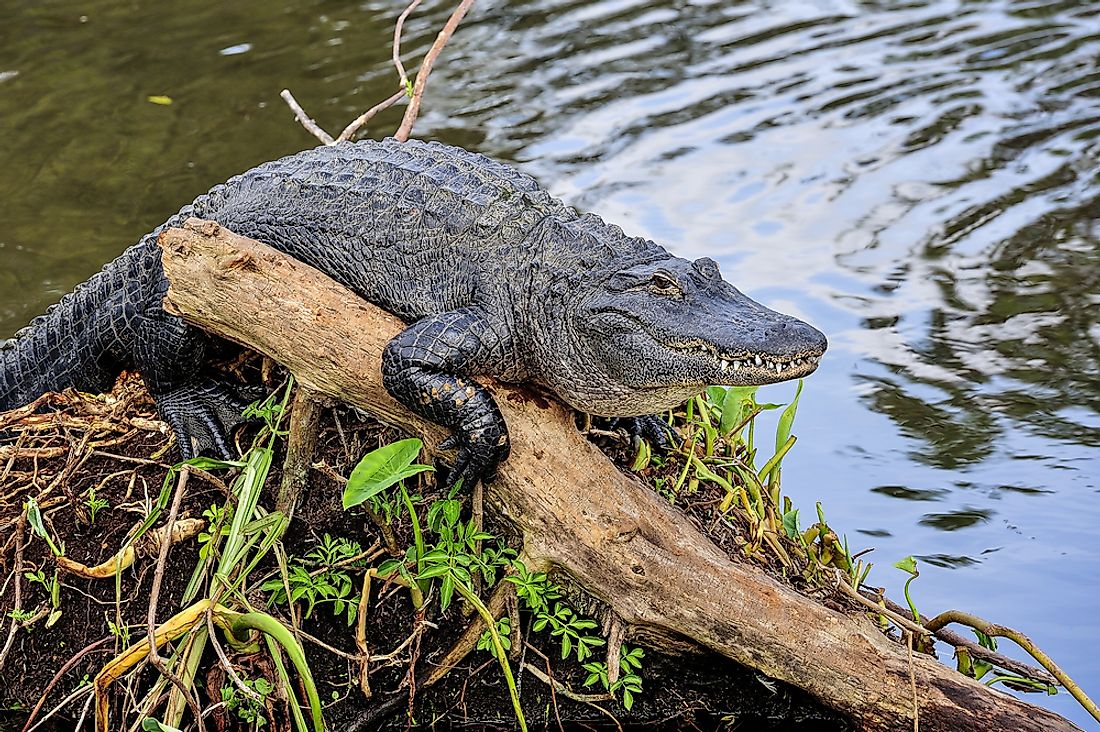American Alligator Facts: Animals of North America

The American alligator (Alligator mississipiensis) is a big reptile belonging to the family of crocodiles. It is indigenous in south east of United States of America. Mature male alligators measure 3.4 meters to 5 meters long, and has a life weight of 450 to 600 kilograms. On the other hand, females are small, measuring approximately three meters long. The American alligator has a broad mouth, overlapping jaws, and dark color.
Diet
American alligators are top predators. Mature alligators feed on vertebrates such as mammals, birds, reptiles, fish, and amphibians. Young alligators consume animals without backbone including insects, spiders, snails, worms, and insect larvae. American alligator hunt for animals lesser its size. A recent research in its digestive system indicated that some of indigenous raccoons, muskrats and mammals are dominant on the diet. Calves, cats and dogs are second on the list of alligators’ diet. Alligators also feed on birds such as herons, egrets, storks and coots. Young fledgling birds learning to fly at the water banks in late summer also serve as the main target.
Habitat and Range
American alligators are dominant in wild southeastern United States of North Carolina, South Carolina, Florida, Alabama, and great dismal swamp of Virginia. Some new alligator habitats are continually coming up. Though the new habitats are smaller, they have promising multiplication due favorable environmental conditions. Majorly, alligators inhabit ponds, lakes, rivers, streams, and swamps. A recent study revealed that one alligator lived in a river for ten years in North Atlanta, Georgia.
Most females and young ones live in Carolina bays and surrounding wetlands. They like fresh water but may move to saline water. However, they cannot withstand salty water as they have non-functional salt glands on the tongue. In North Central Florida, studies revealed that male alligators mainly thrive in open lakes during spring. Their female counterparts prefer dwelling in swamps and open waters during spring. During summer, male alligators prefer open water while females opt for swamps in order to construct nests to lay eggs in. During winter, both male and females will hibernate in banks or tree clumps. American alligators thrive well even under cold conditions. They are active even under temperatures of seven degrees Celsius. The alligators are well equipped to deal with cooler conditions, thus, they have spread further north from the equator.
Reproduction
American alligators breed in spring. During this season, the alligators come together for courtship and mating. Females make nests composed of leaves, sticks, vegetation, and mud. Females lay twenty to fifty eggs and cover them with vegetation in order to provide warmth to the eggs. Sex development in alligators depends on temperature. Males develop at a temperature 34 degrees Celsius or more, while females develop at temperature 30 degrees Celsius or lower.
Behavior
American alligators turn wetlands to small holes that hold water for dry seasons. These holes serve as homes for other water animals as well. Water animals escape drought by hibernating in alligator holes. Alligators also control perennial vegetation in wetlands. They achieve this by feeding on small animals like coypu, which can clear marshy vegetation.











